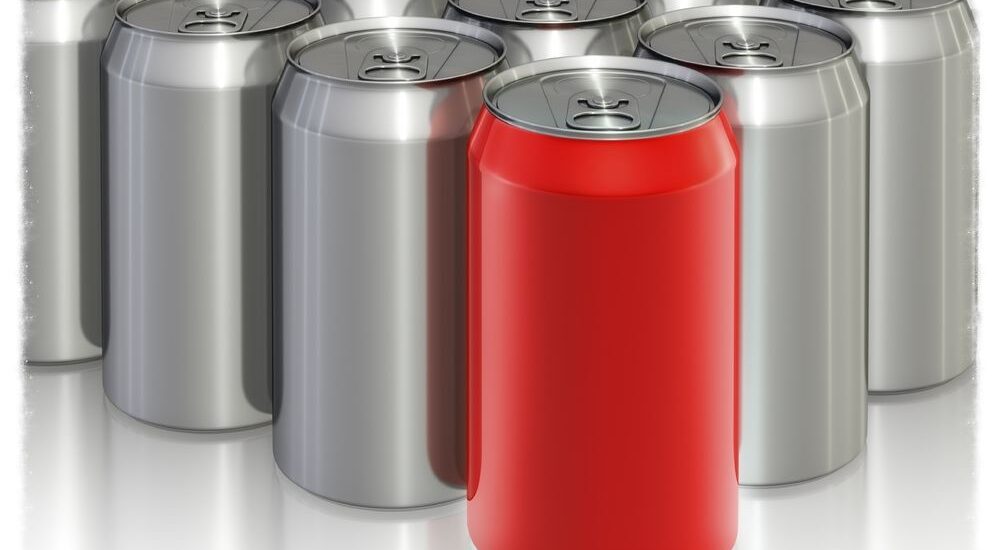The global cans market is set to witness steady growth over the next decade, with an estimated compound annual growth rate (CAGR) of 3.9% from 2023 to 2033. According to market forecasts, the industry is expected to generate USD 36.99 billion in 2023, climbing to USD 54.23 billion by 2033.
This growth is largely fueled by the rising consumer demand for practical and efficient packaging solutions across food, beverage, and healthcare sectors. Cans continue to be a preferred choice for their durability, portability, and recyclability, aligning with modern consumer preferences for convenience and sustainability.
Sustainability initiatives and advancements in manufacturing technologies are anticipated to play a pivotal role in the evolution of the cans market. These efforts are likely to foster the development of eco-friendly and innovative packaging solutions that meet both environmental standards and consumer demands.
Explore In-Depth Analysis—Click Here to Access the Report!
Primary Catalysts for the Market
The convenience component is crucial because canned foods have a long shelf life and are simple to store, which suits busy lifestyles. The demand for preserved foods during crises or calamities influences the market expansion for cans.
Improvements in package technologies, including easy-open lids and environmentally friendly materials, increase consumer attractiveness. Consumers concerned about their health look for canned products with less preservatives and more nutritional value, inspiring producers to innovate.
E-commerce and online grocery platform growth increase market accessibility and reach. Cans market expansion is influenced by changing taste preferences and the availability of various cuisines in canned format.
Restrictive Influences of the Cans Industry
Numerous restraints on the market’s expansion and dynamics exist. Alternative packaging options in demand threaten traditional cans due to environmental concerns and sustainability trends. Cost ambiguity for producers and consumers can result from fluctuating raw material prices, such as those for aluminum.
The market might be constrained by shifting consumer preferences toward freshly prepared items with little processing. The market is being challenged by heightened competition from flexible and cutting-edge package formats. Consumers’ concerns about their health, particularly beliefs of possible chemical leakage from can linings, also influence their reluctance.
Flexible packaging that can challenge cans’ predominance is required by changing retail environments with a rising emphasis on e-commerce. These market-influencing limitations compel competitors to innovate and adapt to maintain their position as market leaders in the packaging sector.
Regional Outlook
North American Cans Market: The cans market in North America is stable and broad. Canned vegetables, fruits, soups, and meats are popular. Convenience and shelf stability are key factors driving the demand for cans. Moreover, fresh and least processed foods are more prevalent, which influences the market.
European Cans Market: Europe has a vast, robust market from fish to vegetables and ready-to-eat meals. Canning items are popular for their convenience and longer shelf life, particularly for emergency food supplies and outdoor activities.
Asian Cans Market: Cans are frequently used in Asia, particularly for seafood and fruits. The convenience component is especially important in urban areas, where busy lives can make making fresh meals difficult. Traditional culinary habits and a penchant for new products may constrain market expansion for cans.
Key Takeaways
- By 2033, the aluminium segment is expected to account for 78% of the market.
- The beverages segment is expected to develop at a CAGR of 4.5% in the global cans market through 2033.
- From 2023 to 2033, China is predicted to hold a 19.8% share of the cans market.
- Can demand in the United States is projected to advance at a CAGR of 3.9% through 2033, achieving a valuation of USD 8.94 billion.
Competitive Landscape
The cans market is extremely competitive, with numerous small and medium-sized firms. In addition to boosting their profit share in the market, cans manufacturers are making deliberate attempts to expand their production capacity and geographical footprints.
Due to the rising restrictions and regulations imposed by individual governments to discourage plastic packaging, cans manufacturers are focused on sustainable packaging solutions and their reuse or recycling.
Vital Cans Manufacturers
- Ball Corporation,
- Mondi Group,
- Novelis Inc.,
- Crown Holdings, Inc.,
- Silgan Holding Inc.
- Ardagh Group S.A
- Orora Packaging Australia Pty. Ltd.
- The Olayan Group
- Ardagh S.A.
- Canpack
- CPMC Holdings Ltd.
- Bangkok Can Manufacturing
- Nampak Ltd.
- Mahmood Saeed Beverage Cans & Ends Industry Company Ltd.
- Kian Joo Can Factory Berhad
Recent Breakthroughs
- Partnership
Beiersdorf and Nussbaum partnered in 2021 for eco-friendly aerosol cans using recycled aluminum from repurposed beverage containers.
- Launch
In February 2021, Ball Corp supplied aluminum cans to Responsible Whatr for pure spring water, maintaining freshness despite light or heat exposure.
Key Segments
By Material Type:
- Aluminum
- Steel/Tin Plated
- Plastic
- Paper Composites
By Capacity:
- Up to 200 ml
- 201 to 750 ml
- More than 750 ml
By End Use:
- Food
- Beverages
- Alcoholic Beverages
- Non-alcoholic Beverages
- Healthcare
- Cosmetics & Personal care
- Homecare Products
- Paints & Lubricants
- Other Consumer Goods (Gifts, Toys, Merchandizing, etc.)
By Region:
- North America
- Latin America
- Europe
- The Middle East and Africa
- East Asia
- South Asia
- Oceania
About Future Market Insights (FMI)
Future Market Insights, Inc. (ESOMAR certified, recipient of the Stevie Award, and a member of the Greater New York Chamber of Commerce) offers profound insights into the driving factors that are boosting demand in the market. FMI stands as the leading global provider of market intelligence, advisory services, consulting, and events for the Packaging, Food and Beverage, Consumer Technology, Healthcare, Industrial, and Chemicals markets. With a vast team of over 400 analysts worldwide, FMI provides global, regional, and local expertise on diverse domains and industry trends across more than 110 countries.
Contact Us:
Future Market Insights Inc.
Christiana Corporate, 200 Continental Drive,
Suite 401, Newark, Delaware – 19713, USA
T: +1-347-918-3531
For Sales Enquiries: sales@futuremarketinsights.com
Website: https://www.futuremarketinsights.com
LinkedIn| Twitter| Blogs | YouTube

